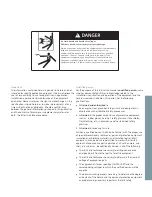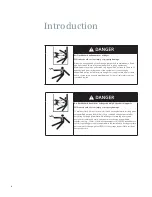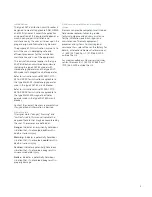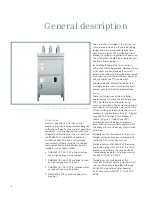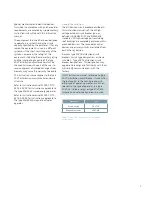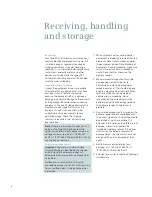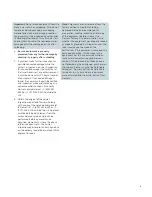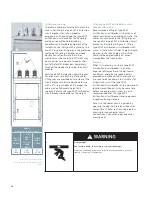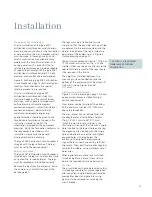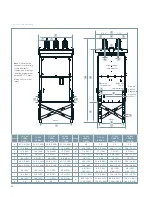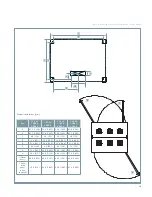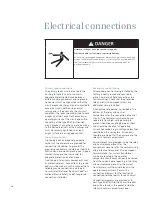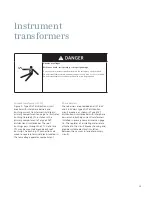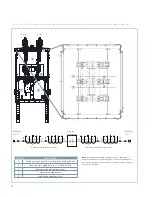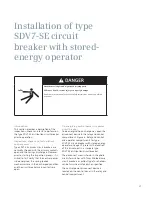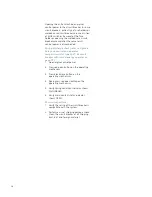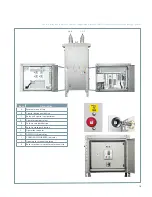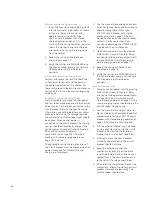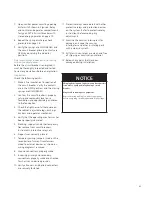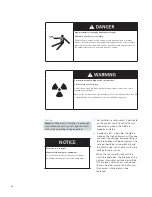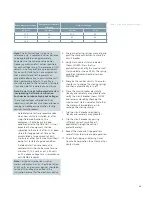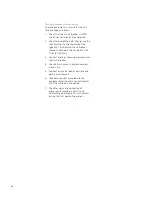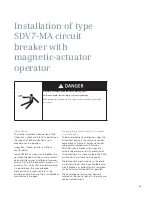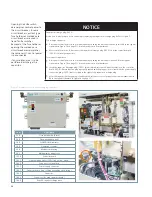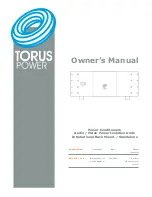
11
Preparation for installation
Prior to installation of the type SDV7
distribution circuit breaker, careful design,
planning and construction of the foundation
or base on which the circuit breaker will rest
must be made. A thorough analysis and
careful construction may alleviate many
problems at the time of installation, and
during operation. It is important that a
relatively level surface be provided capable
of supporting the weight of the type SDV7
distribution circuit breaker, and 0.75 inch
diameter anchor bolts are recommended.
Figure 4: Anchoring type SDV7 distribution
circuit breaker on page 13 illustrates typical
locations for anchor bolts. No special
leveling procedures are required.
Prior to installation of a type SDV7
distribution circuit breaker, study this
instruction book and the circuit breaker
drawings, such as general arrangement/
outline drawing, schematic diagram,
connection diagrams, current transformer
connection diagram, electrical bill of
material and nameplate engraving.
Special attention should be given to the
foundation information contained in this
instruction manual as well as the
information provided on the equipment
drawings. Verify the foundation conforms to
the requirements described in this
instruction manual and the general
arrangement/outline drawing.
The type SDV7 distribution circuit breaker is
shipped with the legs attached. The legs
must be set to the desired height.
Setting leg height
The type SDV7 distribution circuit breaker is
shipped with the legs set to a low level (and
on some units, turned outward). The legs
must be removed and installed correctly.
Remove the legs from the enclosure. Raise
the enclosure, and install the legs at the
desired height.
Installation
The legs must be installed and turned
inward, so that the two sides of the each leg
are adjacent to the enclosure sides and the
hole at the bottom of the leg is inside the
perimeter of the enclosure, as in Figure 3:
Outline drawing on page 12.
Use anti-seize compound (Loctite* 77164 or
77124 nickel anti-seize) on the
1
/
2
-13 SAE
stainless steel cap screws used to secure the
legs to facilitate removal of the legs should
it be required in the future.
The height (as installed) between the
mounting surface (foundation) and the
bottom of the enclosure must be at least 4”
(102 mm) and no higher than 28”
(711 mm).
High-seismic installations
Figure 3: Outline drawing on page 12 shows
optional cross-braces installed for high-
seismic requirements.
Cross braces can be installed if the bottom
of the enclosure is at least 12” (330 mm)
above the foundation.
The cross braces consist of steel links that
are adaptable for all installation heights
(from 13” (330 mm) to 28” (711 mm).
Install the cross braces as shown in the
illustration. The end of the link with a single
hole is bolted to the lowest hole on the leg.
The opposite link is bolted with the single-
hole end bolted to one of the two highest
exposed holes in the leg below the
enclosure. The highest hole or second
highest hole is used, as necessary to allow
alignment. Then, bolt the two links together
towards the middle, using whichever set of
holes align.
When optional cross braces are furnished,
install all eight cross braces (four sets) to
obtain the required seismic performance.
Location
The circuit breaker should be located so that
it is readily accessible for manual operation
and inspection. Ample clearance should be
provided for doors and panels to swing
open, or to be removed for servicing the
circuit breaker.
* Loctite is a registered
trademark of Henkel
Corporation.
Summary of Contents for SDV7
Page 54: ...54 Table 16 Remarks ...
Page 55: ...55 Table 16 Remarks continued ...


